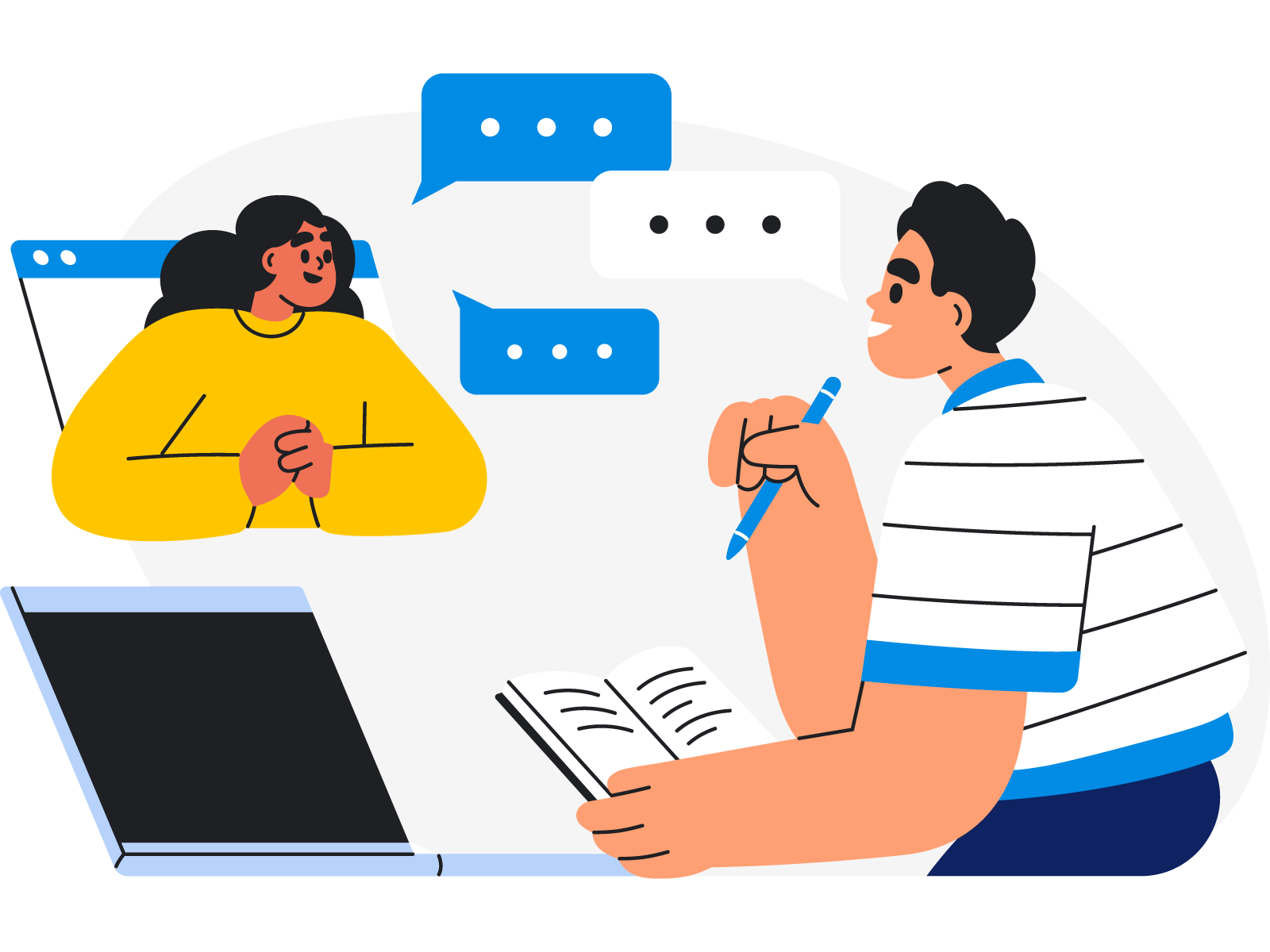
Explore the Certified Teacher Pathway
What does it mean to be a certified teacher in Washington State?
Teachers shape lives, inspire curiosity, and support growth. In Washington, a certified teacher is an individual who has completed the required training and earned the necessary credentials to teach in public schools. Think of certification as a license that proves you’re ready to lead a classroom and support your students in meaningful ways.
No matter the subject or grade level, teachers are at the heart of their school communities. You’ll find them:
Creating engaging lessons
Supporting students academically, socially, and emotionally
Communicating with families
Collaborating with colleagues
Continuing to learn and grow through professional development
Whether they teach elementary, middle school, high school, or Special Education, teachers play an essential role in helping every student grow and succeed.

What do they teach?
Teachers can focus on different grade levels or subject areas, depending on their interests.
Elementary teachers typically teach all core subjects to one group of students.
Middle and high school teachers usually focus on one subject, such as English, history, math, science, or career and technical education.
Some teachers also focus on a specialty area such as special education, English language learners (ELL), gifted education, or reading support.
Career Overview
Where do certified teachers work?
Public schools
Private schools
Charter schools
Online or virtual programs
Alternative education settings
International schools
Work Schedule
Most teachers work Monday through Friday during school hours, following the school district calendar. They spend their days planning and delivering lessons, working with students, and collaborating with families and other educators. Some also choose to support after-school programs or summer sessions.
Could Teaching Be the Right Path for You?
People become teachers for many different reasons. For some, teaching is a calling — a way to invest in the next generation. They feel a deep sense of purpose in the emotional investment and responsibility it takes to help students grow. Some are inspired by a loved one who was a teacher. Others want to be the kind of teacher they wish they had —someone who speaks up for students and helps create more equitable opportunities. As you think about your own goals and a possible career as a teacher, ask yourself if any of these reasons resonate with you:
They want to make a positive impact on young people's lives
They love their subject area and want to share that passion
They enjoy the variety and creativity of classroom teaching
They value having a career with meaning and purpose
They appreciate the schedule that aligns with family life
They want to work in their local community

Find the Path That Fits You
There’s more than one way to become a certified teacher in Washington, which means you can pick the path that works best for your life, schedule, and goals!
4-Year University
Start at a university with a teacher prep program and earn your bachelor’s degree.
Best for: Students who are able to be a full-time student and live near the university.
Alternative Routes
Flexible options that let you work while earning your certification, often used by paraeducators or career changers with relevant experience!
Best suited for: Adults who want to earn while they learn, parents seeking extra flexibility, and those already working in education who wish to pursue a teacher certification.
2+2 Pathway
Earn a two-year degree at a community college, then transfer to a teacher preparation program (university or college) to finish your teaching degree. Programs with bachelor’s in teacher preparation are found in universities and many community colleges in Washington State.
Best for: Students who are working paraeducators, those seeking a smaller class size, or those who prefer to stay close to home.
Master’s in Teaching (MIT)
Already have a bachelor’s degree in something else? You can earn a Master’s in Teaching and become a certified teacher.
Best for: Anyone switching careers, or recent grads with a non-education degree who want to teach.
No Matter Which Path You Choose…
You’ll work through the same key milestones:
Complete college-level coursework
Gain experience in real classrooms
Pass your certification tests
Earn your teaching license
5 Ways to Become a Certified Teacher in Washington State
Key Milestones on Every Path
Pick your path: Use apps, quizzes, or AI tools to find the best fit for your style and goals
Start learning: Complete your college coursework—online, in-person, or hybrid
Get real experience: Jump into classrooms, work on group projects, and build your teaching skills
Show what you know: Pass your certification tests
Celebrate: You’re a certified teacher—ready to inspire the next generation!
Pro Tip:
No matter which path you choose, you’ll build skills that matter like collaboration, creativity, tech fluency, and empathy. Use digital portfolios, share your journey on social media, and connect with other future teachers online. Own your path!
Starting Your Journey: Your First Steps Into a Career as a Certified Teacher
Dreaming of leading your own classroom as a certified teacher? Here’s your roadmap to becoming a certified teacher in Washington - broken down into clear, actionable steps, with real advice from teachers who’ve been right where you are.
Step 1: Finish High School or Earn Your GED
Here are ways you can start strong:
Take college-prep classes in English, math, science, and social studies
Aim to keep your GPA above a 3.0.
If it’s an option, join a high school Teaching Academy to get hands-on experience
Look for dual credit opportunities in education courses
Volunteer or work with kids whenever you can (think: tutoring, camps, after-school programs)
“Teaching academies are a great launching pad into the profession. Students get hands-on experience in real classrooms and can earn dual credit toward their college education.”
— Michelle Spenser, OSPI Pathway Supervisor
Step 2: Earn Your Bachelor’s Degree in Education and Join a Teacher Preparation Program.
This is your launchpad!
There are many routes to get a BA/BAS degree in Washington. Most Washington teachers begin their education at a community college.
Make sure your degree is from an accredited college or university.
Meet with advisors to ensure you take the required classes.
Get real classroom experience—observe, assist, and then student-teach alongside a mentor.
Most programs require a GPA of 2.8 or higher.
Step 3: Pass Your Tests
Study, but don’t stress—there are supports to help you succeed!
WEST-B (or equivalent): Tests your basics in reading, writing, and math. Often needed for program admission. SAT/ACT scores can sometimes count instead.
NES/WEST-E:
These are subject area tests for your chosen endorsement (what you want to teach).
The testing requirements may seem scary at first, but there are resources to help you prepare.
“I had testing anxiety, so I was worried about taking the teacher certification test. I didn’t know there were other things I could do. The West-B was different and not as high pressure.”
— Alex Castro Wilson, Teacher in Renton School District
Step 4: Choose Your Endorsement
Your endorsement is the subject or grade level you’re certified to teach. Popular choices:
Elementary Education (grades K–8)
Middle Level Math, Science, Humanities (grades 4–9)
Secondary Math, Science, English, Social Studies (grades 5–12)
Special Education
English Language Learners (ELL)
“I always recommend students think about endorsements, what they entail and how that impacts their education journey, especially the difference between choosing a major vs. choosing an endorsement.”
— Alexis Meyers, Skagit Valley College

1. Start with FAFSA
Your first step is completing the Free Application for Federal Student Aid (FAFSA) — it unlocks access to grants, scholarships, and low-interest loans. Note: If you’re a DACA student, apply using the Washington Application for State Financial Aid instead.
2. Look for Grants & Scholarships
These don’t have to be repaid — and many go unclaimed every year! Some to check out:
Many colleges also offer their own scholarships!
3. Explore District & Program Financial Support
Many districts and colleges offer extra help for future teachers. Ask about:
“Grow Your Own” programs for paraeducators and community members
Paid residencies or stipends during student teaching
Emergency substitute certification so you can earn while learning
Tuition assistance for current district employees
4. Borrow Wisely (If You Need To)
Loans can be helpful — just go in with a plan:
Borrow only what you need to cover expenses
Understand your repayment options
Talk to your advisor or financial aid office for specific help and guidance
Student Teaching Tip: As part of your teacher training program, you’ll complete student teaching where you’ll experience teaching students in a real classroom, with the help of a mentor teacher. Since student teaching is often full-time and unpaid, finding opportunities to offset the costs can bring you peace of mind. Depending on your program and district, here are some options that might be available to support your student teaching:
Paid residency programs
Emergency substitute certification to work part-time
Stipends or conditional loans
Accelerated programs to reduce the length of student teaching
Work-study jobs in university education department
Helpful Links
Washington Application for State Financial Aid (WASFA) for DACA students
Teacher Shortage Conditional Scholarship
Need More Help?
Connect with your school counselor or college advisor — they can help you make a financial plan that fits your goals.
How to Fund this Pathway
Financial Support for Future Teachers
Worried about how to pay for your education? You’re not alone — and the good news is, there are resources to help.
Whether you're just starting college or switching careers, here are the top ways to get financial support as you work toward becoming a certified teacher.

Frequently Asked Questions (FAQs)
-
Try it out! Here are some ways to explore:
Volunteer in schools or youth programs
Take an introductory education course
Talk with teachers about their experiences
Try substitute teaching or working as a paraeducator
Join an Educators Rising club or Teaching Academy
Getting real-world experience is the best way to see if teaching inspires you.
-
Endorsements are the specific subjects or grade levels you’re certified to teach. Here are some of the most versatile and in-demand endorsements:
Elementary Education -teaching most subjects in grades K–8
Special Education - supporting students with diverse learning needs.
Math or Science for middle and high school. This is always in high demand.
English Language Learners - helping students who are learning English.
-
The WEST-B (or an approved equivalent) is often needed and shows basic skills in reading, writing, and math
A content test (WEST-E or NES) in your chosen endorsement area(s)
Some requirements can be waived if you have qualifying coursework or test scores from another state.
Next Steps
You’ve learned all about the pathways and requirements to becoming a teacher in Washington State, now what? Here are recommended actions you can take no matter where you are starting your career path.
For High School Students: Jumpstart Your Future
Join a Recruit Washington Teachers or CTE Teaching Academy program:
Ever wondered what it’s like to be a teacher? Teaching Academies are special programs offered at many high schools that give you a chance to:
Discover what teaching is really about
Practice your teaching skills in real classrooms
Earn college credit while you’re still in high school (yes, really!)
Build relationships with mentor teachers who’ll cheer you on
Visit college campuses and education programs
“Teaching academies are a great launching pad into the profession. Students get hands-on experience in real classrooms and can earn dual credit toward their college education.”
— Michelle Spenser, OSPI Pathway Supervisor
Pick Classes That Power Up Your Skills:
English & Communication —for explaining ideas clearly.
Psychology (to understand how people learn)
Math & Science (for problem-solving superpowers)
Foreign Language (to help more students)
Drama or Public Speaking (for confidence in front of a crowd)
Get Relevant Real-World Experience
Tutor younger students (online or in person)
Volunteer at after-school programs or summer camps
Coach youth sports or lead clubs
Start a study group or help with community events
Plan for What’s Next:
Research colleges with strong education programs—take virtual tours!
Look for scholarships. There’s more financial aid out there than you think, and most scholarships go unclaimed.
Prep for college entrance exams—even if you’re leaning toward dual credit or community college, you can’t go wrong with solid test prep.
Explore class options at your local community college. Many offer , smaller class sizes, greater diversity, and direct transfer pathways..
For College Students: Create Your Path
Choose the Right Associate Degree:
Associate in Arts (AA): Transfers to most education programs with specific prerequisites.
Associate in Applied Science in Education (AAS-Ed): Made for future teachers and may transfer directly into BA or BAS programs.
Make an appointment to see your academic advisor to start building your class schedule.
Career Changers: What if I Want to Change my Career to Teaching?
It’s not too late to start, and your experience could turn into your classroom strengths!
Customer service? You’ve got classroom management skills.
Project management? You’re already a pro at lesson planning.
Tech industry? STEM teaching needs you!
Healthcare? Health science classrooms are calling.
Business? Career and technical education is a great fit.
How to Make the Switch to Teaching:
Already have a Bachelor’s? Check out certification-only programs or a Master’s in Teaching (MIT)..
Have an Associate’s? Finish your Bachelor’s in Education with a “2+2 = teach” program.
No degree yet? You can start with an Associate’s pathway, or apply directly to a 4-year program—there’s no wrong place to begin.
Working as a paraeducator? “Grow Your Own” programs in your district can help you transition into a teaching role.

Real Stories from Paraeducators
Lorem ipsum dolor sit amet, consectetur adipiscing elit.
Nam pretium eros ipsum, a finibus tellus tristique ac. Mauris ac mauris ut quam posuere porttitor. Etiam id facilisis justo. Sed commodo suscipit tempor. Praesent sapien ligula, sollicitudin ut efficitur non, convallis vitae magna.
Lorem ipsum dolor sit amet, consectetur adipiscing elit.
Nam pretium eros ipsum, a finibus tellus tristique ac. Mauris ac mauris ut quam posuere porttitor. Etiam id facilisis justo. Sed commodo suscipit tempor. Praesent sapien ligula, sollicitudin ut efficitur non, convallis vitae magna.














